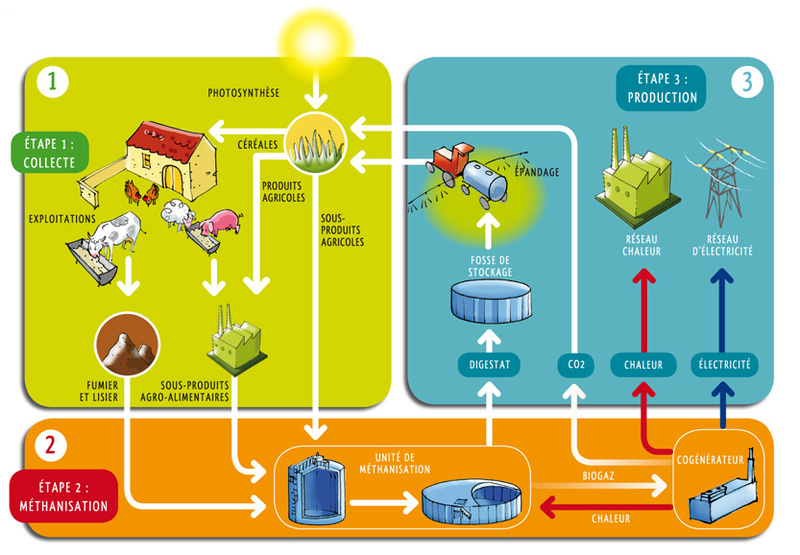Biomass is a renewable energy source derived from organic materials. It plays a central role in the ecological transition by enabling the recovery of plant and animal waste. This guide presents the various aspects of biomass, how it works, its advantages, and its applications.
Biomass: Definition
Biomass refers to all organic materials of plant, animal, bacterial, or fungal origin. These materials can be converted into various forms of energy such as heat, electricity, or biofuels.
The Different Forms of Biomass
Biomass can take different forms, including:
- Dry biomass: wood, forest residues, wood industry waste.
- Wet biomass: green waste, agricultural effluents, and sewage sludge.
- Microalgae: used to produce biofuels.
How Biomass Works
The transformation of biomass relies on several processes:
- Combustion: burning biomass to produce heat and electricity.
- Fermentation: converting wet biomass into biogas (methane).
- Pyrolysis: breaking down biomass at high temperatures in the absence of oxygen to obtain bio-oils and charcoal.
Advantages of Biomass Energy
Biomass has several advantages:
- Renewability: it utilizes natural and renewable resources.
- Waste reduction: it allows for the recovery of organic waste and reduces pollution.
- Carbon neutrality: the CO₂ emitted during combustion is offset by that absorbed during plant growth.
Applications of Biomass
The applications of biomass are varied and cover several sectors:
- Heat production: domestic and industrial heating.
- Electricity production: thermal power plants using biomass as an energy source.
- Biofuels: bioethanol and biodiesel for vehicles.
In conclusion, biomass is a high-potential energy source that supports the reduction of carbon footprints and waste recovery. Its diversified use provides ecological and sustainable solutions to current energy needs.
Articles similaires
Thank you!
We will contact you soon.













